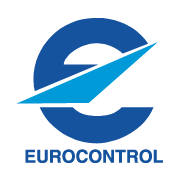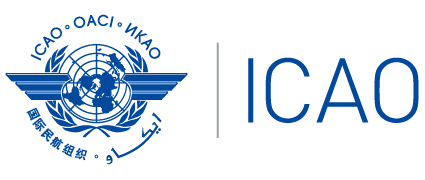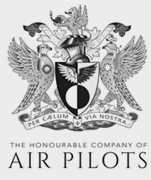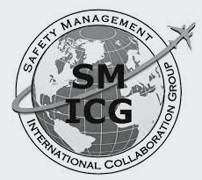Welcome to the U.S. Aviation Safety Team
Risk in the National Airspace System (NAS) is continuously evolving, increasingly complex, and interconnected across different aviation industry sectors. The USAST achieves a unified approach for managing national aviation safety by proactively addressing risk and accelerating the flow of information – from hazard identification through implementation on the front line of operations to monitoring the effectiveness of mitigations developed by safety risk management panels. The USAST also requires even more coordination, collaboration, and cooperation between government and industry, as well as across industry sectors.
The USAST integrates the existing safety teams (USCAST, USGAJSC, and USHST) with ASIAS. Supported by an Aerospace National Safety Issue Registry (ANSIR), the USAST model bolsters the effectiveness of national-level aviation risk assurance. The USAST will be committed to a collaborative process that can prioritize systemic safety issues to be addressed by shared data analytics resources or individual aviation community teams. Key enhancements of the USAST include a unified governance structure, the ANSIR, and constant vigilance.
The USAST and community safety teams use Safety Management System (SMS) techniques to address potential systemic safety issues identified through ASIAS, industry forums, or Federal Aviation Administration (FAA) data. The system-level safety cycle touches all pillars of SMS: Safety Policy (governance), Safety Assurance (data monitoring), Safety Risk Management (development of new Safety Enhancements), and Safety Promotion (sharing lessons learned with other safety professionals).
The U.S. Aviation Safety Team (USAST) is a strategic initiative established to unify the efforts of several key aviation safety groups in the United States, including—
- ASIAS (Aviation Safety Information Analysis and Sharing) – a system for collecting and analyzing aviation data from various sources to uncover hidden risks;
- USCAST (U.S. Commercial Aviation Safety Team) – focused on improving safety in commercial aviation;
- USGAJSC (U.S. General Aviation Joint Safety Committee) – dedicated to enhancing safety in general (non-commercial) aviation;
- USHST (U.S. Helicopter Safety Team) – focused on analyzing and preventing helicopter-related incidents.
Key Goals and Approach:
USAST adopts a holistic approach that:
- Accelerates the flow of safety information among teams and stakeholders;
- Enables predictive analytics using real-world data to identify risks before they result in incidents;
- Enhances coordination across commercial, general, and rotorcraft aviation sectors;
- Establishes a common framework for proactive safety management.
Importance:
USAST reflects a broader trend toward integrated risk management and data-driven decision-making. It plays a vital role in maintaining high safety standards in U.S. aviation while ensuring adaptability in the face of emerging challenges—such as technological innovation or shifting operational behaviors.
The typical USAST safety analysis and recommendation process, structured in several key stages:
🛠 1. Data Collection (via ASIAS)
USAST leverages the ASIAS system to gather data from a wide range of sources, including:
- Flight data recorders (FDRs)
- Safety reports (ASAP, ASRS)
- Air traffic data
- Maintenance records
- Voluntary safety submissions from pilots and airlines
🔍 Goal: Build a comprehensive picture of operations and spot early signals of risk.
📊 2. Data Analysis & Risk Identification
Expert analysts and safety engineers review the data to:
- Detect patterns, anomalies, and precursors to incidents
- Use predictive models and trend analysis tools
- Compare findings across different sectors (commercial, general aviation, helicopter)
🔎 Example: Increased unstable approaches in certain weather conditions.
🧩 3. Root Cause Analysis
Once a potential risk is flagged, USAST teams:
- Investigate underlying contributing factors (e.g., human error, equipment design, procedural issues)
- Collaborate with subject matter experts from airlines, FAA, manufacturers, and pilots
🧠 Goal: Understand why the issue occurs—not just that it occurs.
🤝 4. Collaborative Solution Development
USAST then works with industry partners to:
- Design mitigation strategies (e.g., training, updated procedures, technology upgrades)
- Propose non-regulatory safety enhancements
- Develop educational campaigns or toolkits
💬 This step emphasizes collaboration over enforcement.
📄 5. Safety Enhancements & Recommendations
Once solutions are developed, they are:
- Documented as Safety Enhancements (SEs)
- Shared with operators, regulators, and industry groups
- Monitored for effectiveness post-implementation
🧾 Each SE has timelines, responsible parties, and metrics for success.
📈 6. Feedback Loop & Continuous Monitoring
USAST maintains an ongoing feedback loop, using ASIAS data to:
- Measure the impact of changes
- Reassess priorities as new risks emerge
- Update SEs or develop new ones if necessary
🔄 The process is continuous and dynamic.
CONTACT USAST: Communications Working Group Chair, First Last










